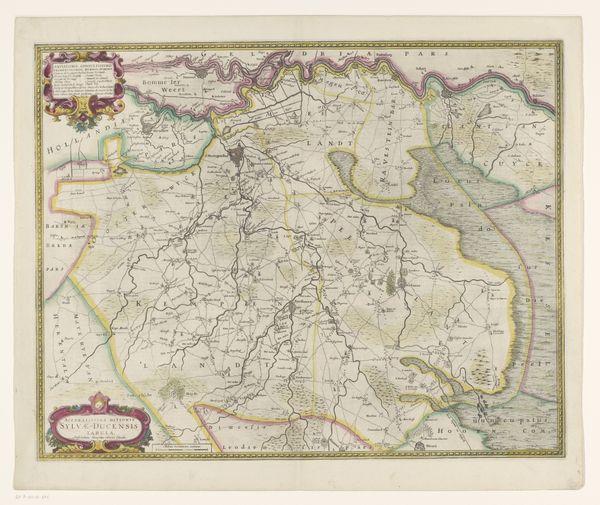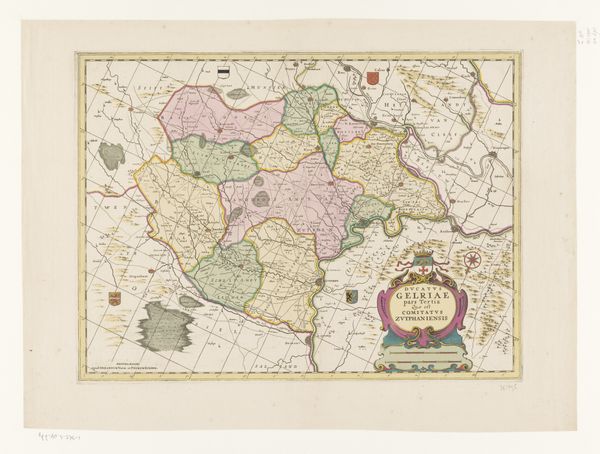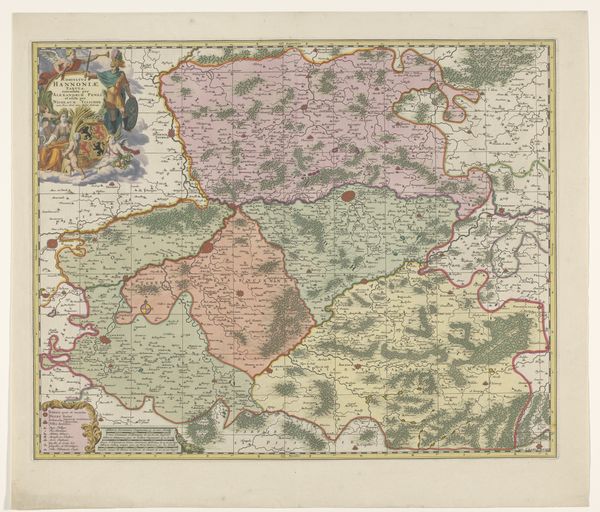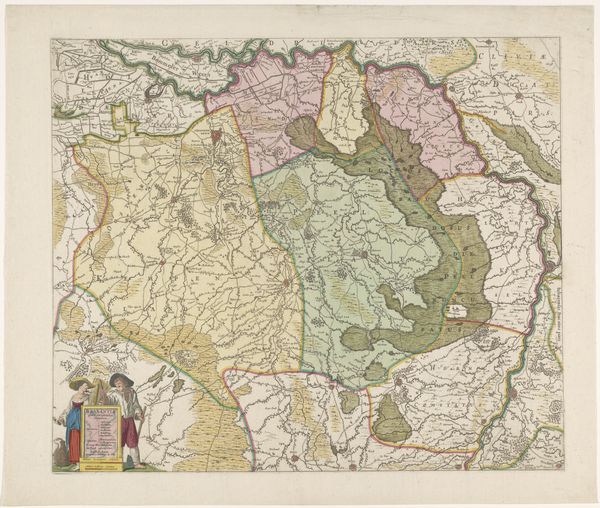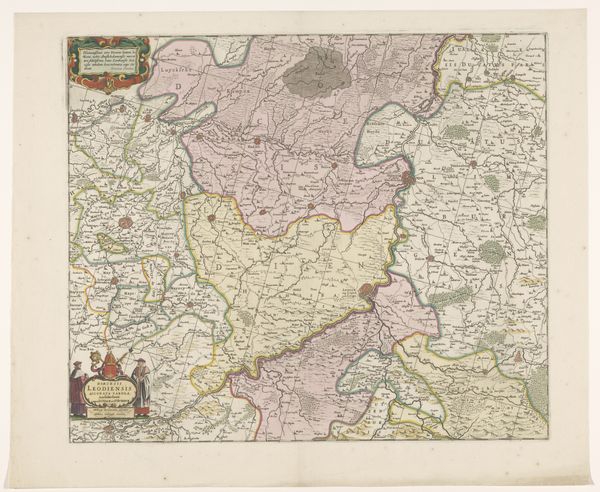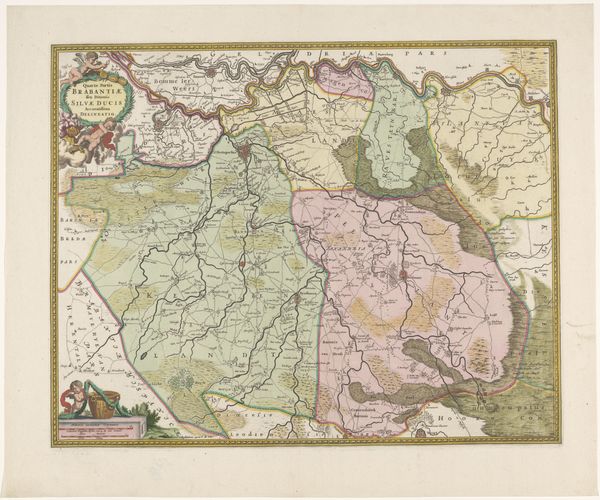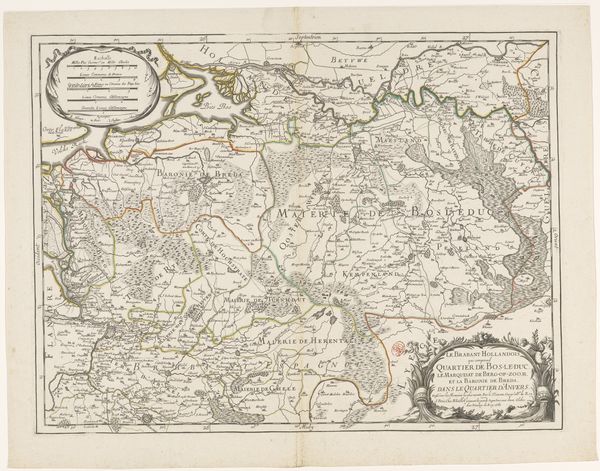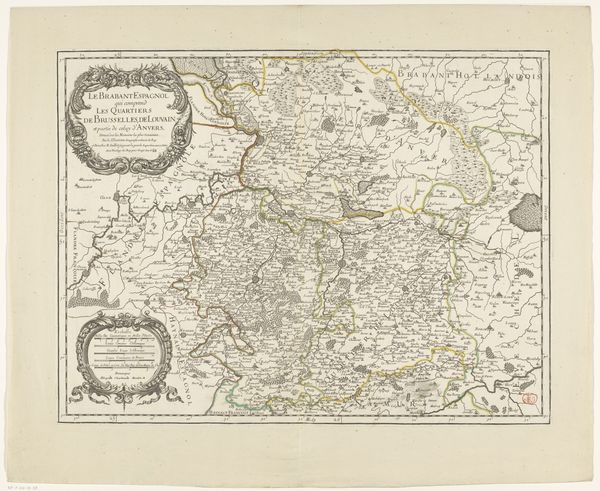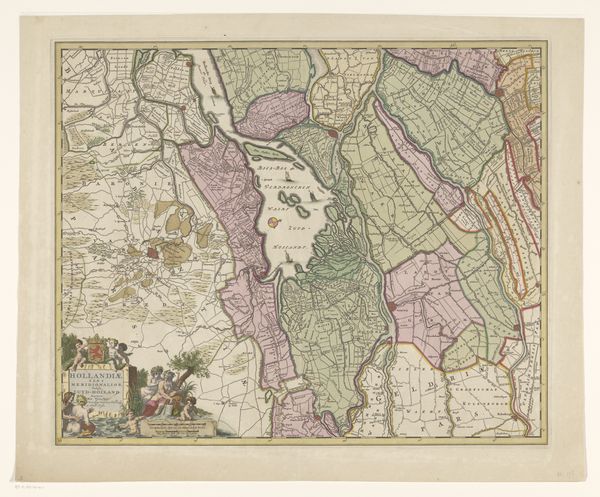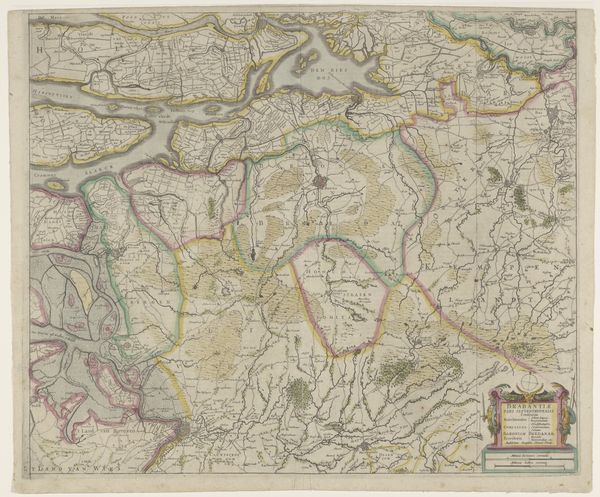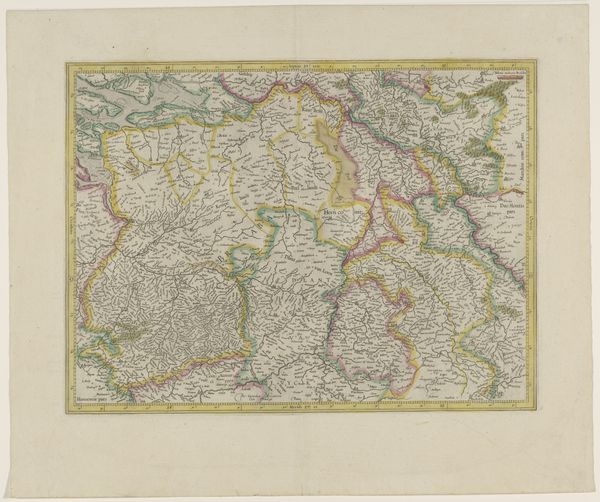
drawing, print, watercolor
#
drawing
#
baroque
# print
#
landscape
#
watercolor
Dimensions: height 455 mm, width 561 mm
Copyright: Rijks Museum: Open Domain
Curator: This meticulous, though unsigned, rendering from circa 1689-1690 is titled "Kaart van het Kwartier van Nijmegen," housed here at the Rijksmuseum. The map is composed using drawing, print and watercolour techniques. Editor: My first impression is of an abstract puzzle rendered in muted jewel tones; there’s a definite spatial complexity that initially obscures any coherent reading of geographic specificity. Curator: Notice how the lines create a visual syntax; borders aren't just boundaries but also graphic elements, defining fields of color. This speaks volumes about the administrative landscape. Editor: Exactly! Colour-coded regions declare ownership. The cartographer’s use of watercolour isn’t merely decorative. It’s about asserting territorial control. What power dynamics were at play here? How did such cartography reinforce political claims and facilitate resource management during the period? Curator: A pertinent point. Observe the topography – how meticulously the artist has delineated rivers and waterways, with their distinctive Baroque flair for curvature. This provides a vital organizational framework that both describes and governs space. Editor: And beyond pure aesthetics, those river systems reveal much about patterns of settlement, trade routes and the vulnerability of populations. Who commissioned such a detailed map, and for what precise purposes? Was it for military planning, or administrative efficiency, or both? These lines on paper have consequences. Curator: Undoubtedly, the cartographic detail speaks to the era's increasing emphasis on empiricism and scientific accuracy. But there remains a vital tension, an underlying dynamism – between observed reality and artistic convention. Editor: That dynamism underscores how maps aren't neutral documents. They’re imbued with cultural assumptions and political imperatives. The act of mapping itself transforms the land, changing our relationship with space. Curator: Precisely! Reflecting on the structural language deployed, it becomes clear that the image possesses qualities we can examine using formal and conceptual critical frameworks, like those introduced by post-structuralism. Editor: Indeed, our analysis reinforces the necessity to interrogate every historical object with nuance. Curator: Well articulated.
Comments
No comments
Be the first to comment and join the conversation on the ultimate creative platform.

